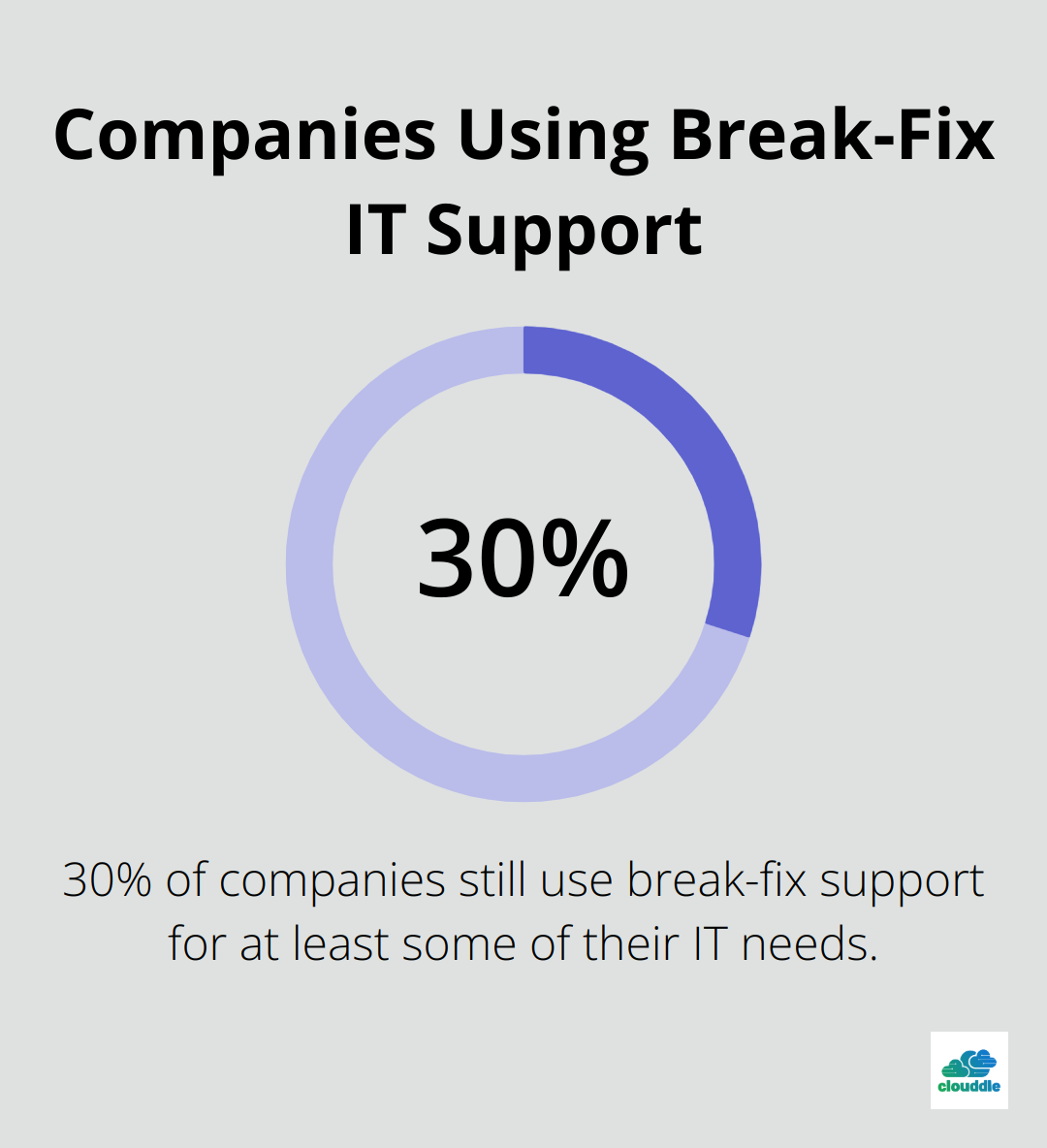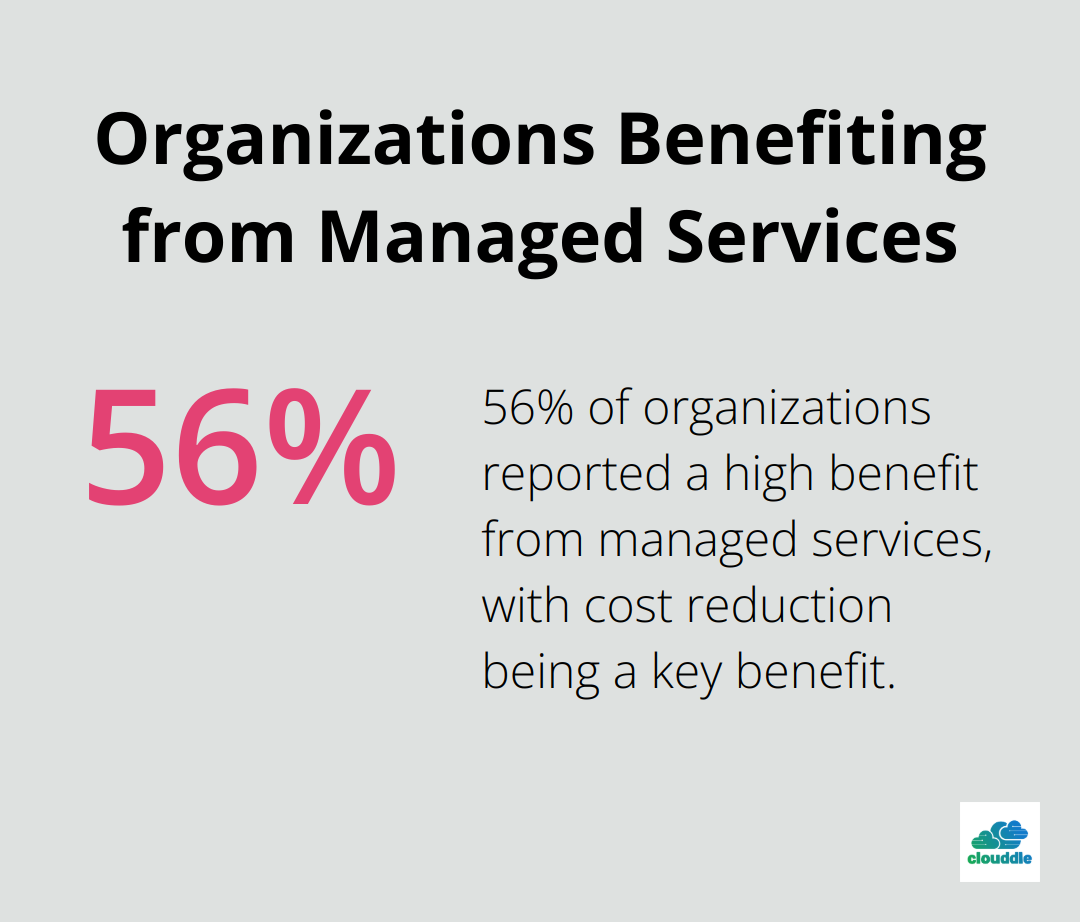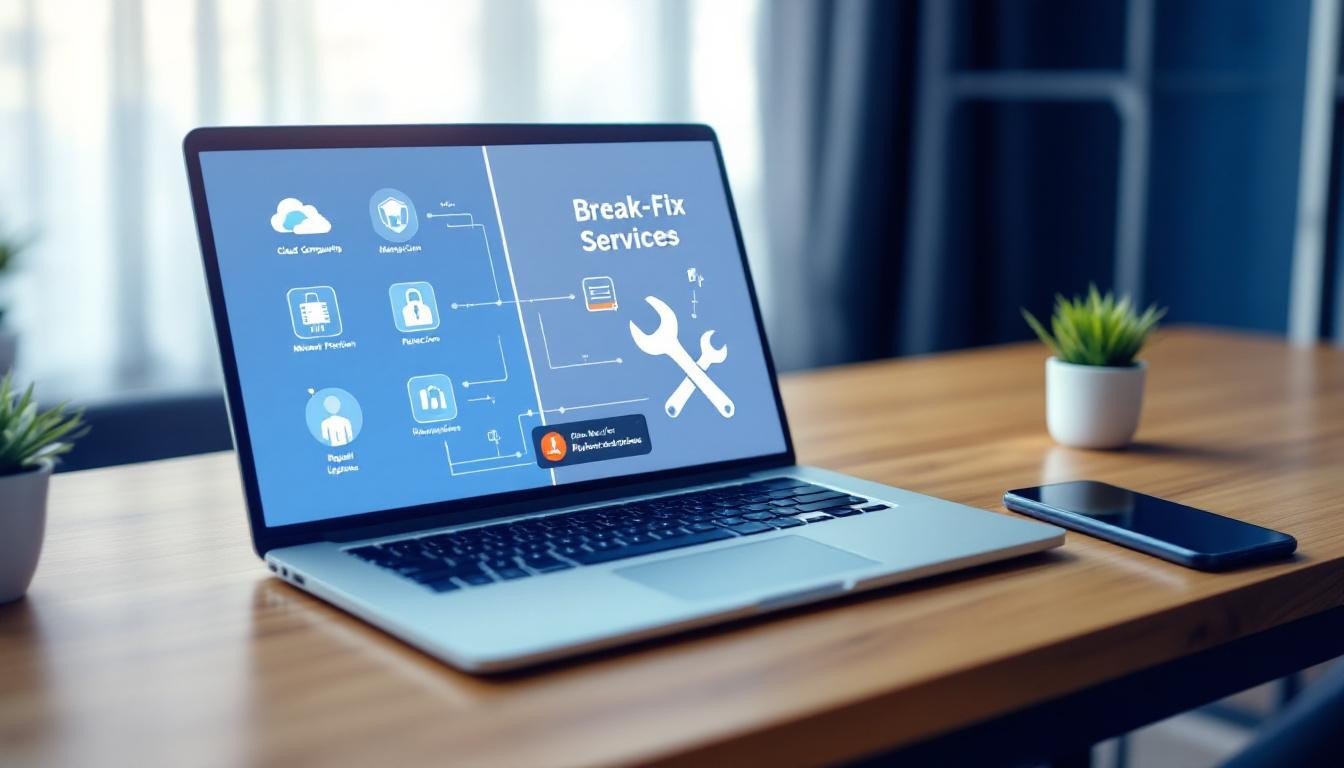At Clouddle, we often encounter businesses grappling with a crucial IT decision: managed IT services vs break-fix support.
This choice can significantly impact a company’s efficiency, security, and bottom line.
In this post, we’ll explore the key differences between these two IT support models and help you determine which approach best suits your business needs.
What Are Managed IT Services?
A Comprehensive Approach to IT Management
Managed IT services refer to technology-focused tasks and services outsourced to a third-party vendor, or managed service provider (MSP). This model transforms businesses by providing continuous support, maintenance, and strategic guidance.
Proactive IT Management
The core of managed IT services lies in prevention rather than reaction. Instead of waiting for problems to occur, service providers actively monitor systems, identify potential issues, and resolve them before they impact business operations. This proactive stance minimizes downtime and maintains smooth operations.
Wide-Ranging IT Support
Managed IT services encompass a broad spectrum of support, typically including:
- Network monitoring and management
- Cybersecurity measures
- Data backup and recovery
- Software updates and patch management
- Help desk support
- Strategic IT planning and consulting
A report by Markets and Markets projects the global managed services market to grow from $242.9 billion in 2021 to $354.8 billion by 2026. This growth highlights the increasing recognition of the value that managed IT services bring to businesses.

Cost-Effective IT Solutions
Managed IT services often prove more economical than traditional break-fix models. Managed services offer cost-effectiveness as one of their key benefits. This reduction stems from preventing costly downtime, optimizing IT investments, and eliminating the need for a large in-house IT team.
Scalability and Flexibility
As businesses grow, their IT needs evolve. Managed IT services provide the flexibility to scale technology infrastructure without the hassle of hiring and training new staff. This scalability proves particularly valuable for small and medium-sized businesses (SMBs) looking to compete with larger enterprises.
Enhanced Security and Compliance
In today’s digital landscape, cybersecurity stands paramount. Managed IT services typically include robust security measures to protect data and systems from threats.
For industries with strict regulatory requirements, managed IT services can help ensure compliance with standards like HIPAA, PCI DSS, or GDPR (essential for avoiding hefty fines and maintaining customer trust).
The next chapter will explore the alternative to managed IT services: the break-fix IT support model. Understanding both approaches will help you make an informed decision about which IT support model best suits your business needs.
What Is Break-Fix IT Support?
The Reactive Approach to IT Management
Break-fix support is a reactive approach to IT maintenance and problem-solving. In this model, IT service providers only intervene when a specific issue arises, contrasting sharply with the proactive nature of managed IT services. Companies that use break-fix support only contact IT professionals when problems occur, such as server crashes or software malfunctions.
How Break-Fix Works
In a break-fix scenario, businesses pay for services on a time-and-materials basis. This means they receive bills for the time technicians spend resolving issues, plus any necessary hardware or software costs. Many companies find this model appealing due to its straightforward nature.
A survey by CompTIA reveals that 30% of companies still use break-fix support for at least some of their IT needs. This statistic demonstrates that while managed services continue to grow, break-fix remains a significant part of the IT support landscape.

Potential for Short-Term Savings
One of the main attractions of break-fix support is the possibility of short-term cost savings. Small businesses or startups with limited budgets might find this model appealing as they only pay when issues arise. The absence of an ongoing monthly fee can seem advantageous for companies with minimal IT needs.
The Drawbacks of Reactive Support
However, the break-fix model comes with significant limitations. Downtime costs for relatively small businesses fall into a range of $137 to $427 per minute, whereas for larger businesses, the costs can be even higher. This highlights the potential financial impact of waiting for problems to occur before addressing them.
Moreover, break-fix support lacks the preventive measures that stop issues from happening in the first place. This reactive approach often leads to more frequent disruptions, longer downtimes, and potentially higher costs in the long run.
The Hidden Costs of Break-Fix
While break-fix might seem cost-effective initially, it often results in more significant expenses and operational challenges over time. The lack of regular maintenance and updates can lead to:
- Increased vulnerability to cyber threats
- Reduced productivity due to unexpected downtime
- Higher repair costs for issues that could have been prevented
- Difficulty in budgeting for IT expenses
As we move forward, we’ll compare managed IT services and break-fix support in detail, providing you with the information needed to make an informed decision for your business’s IT needs.
Which IT Support Model Is Right for Your Business?
The True Cost of IT Support
While break-fix might appear cheaper initially, it often results in higher long-term costs. A recent Gartner survey found that 56 percent of organizations reported a high benefit from managed services, with cost reduction remaining among the key benefits. This reduction comes from the prevention of expensive downtime and optimization of IT investments.

For example, a small business might pay $150 per hour for break-fix support. If they experience just 10 hours of downtime per year, that’s $1,500 in direct costs (not counting lost productivity). In contrast, managed services might cost $500 per month but prevent most of that downtime, saving money in the long run.
Minimizing Downtime and Maximizing Productivity
Downtime is a significant concern for businesses of all sizes. According to Gartner, the average cost of downtime is $5,600 per minute. Managed services excel at preventing these costly interruptions.
A retail business using break-fix support might lose an entire day’s sales due to a server crash. With managed services, that same issue could be prevented or resolved within minutes, saving thousands in lost revenue.
Scaling Your IT with Your Business
As your business grows, so do your IT needs. Managed services offer scalability that break-fix simply can’t match. A survey by Markets and Markets predicts the managed services market will grow to $354.8 billion by 2026, largely due to this flexibility.
A startup that begins with basic IT needs but rapidly expands would need to constantly find new support for each new system with break-fix. Managed services can seamlessly scale alongside the business, adding new services and support as needed.
Fortifying Your Security and Compliance
In an era of increasing cyber threats, security is paramount. The FBI’s Internet Crime Report showed a record 847,376 cybercrime complaints in 2021, with potential losses exceeding $6.9 billion.
Managed services typically include robust security measures and regular updates. They can also help ensure compliance with industry standards like HIPAA or PCI DSS. Break-fix support, by contrast, often leaves businesses vulnerable between service calls.
Making the Right Choice
The decision between managed IT services and break-fix support depends on your business’s specific needs, budget, and growth plans. However, for most businesses looking to optimize their IT operations, minimize downtime, and stay secure in an increasingly digital world, managed IT services offer clear advantages.
Final Thoughts
Managed IT services vs break-fix support presents a clear choice for businesses. Managed services offer proactive, comprehensive technology management, preventing issues before they arise and optimizing productivity. Break-fix support provides reactive solutions, addressing problems as they occur, which can lead to more frequent disruptions and potentially higher long-term costs.
The decision between these models depends on your business size, growth plans, and industry requirements. Most businesses, especially those with strict regulatory needs or heavy reliance on technology, will benefit from managed IT services. These services enhance security, ensure compliance, and offer predictable monthly costs.
At Clouddle, we understand the unique IT challenges faced by various industries. Our managed IT services combine networking, entertainment, and security solutions to streamline operations and boost revenue. We empower businesses to thrive in today’s connected world with 24/7 support and flexible contracts.


